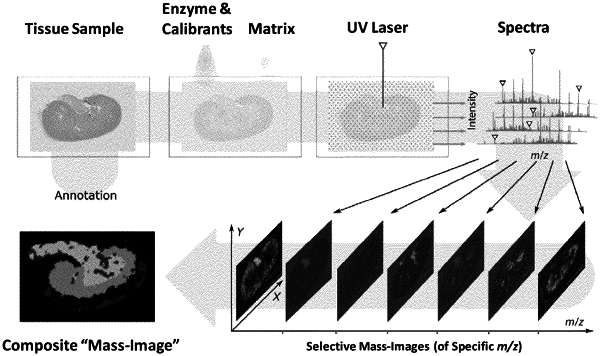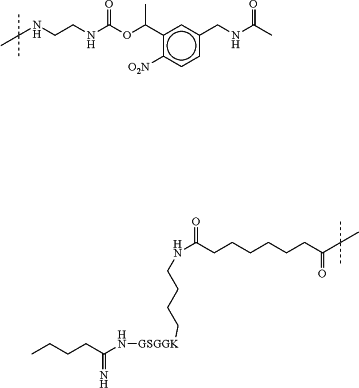| CPC G01N 33/6851 (2013.01) [C07C 271/20 (2013.01); C12Q 1/6841 (2013.01); G01N 2400/00 (2013.01); G01N 2458/15 (2013.01)] | 10 Claims |

|
1. A method, comprising
a) providing a biological sample and a plurality of nucleic acid probes, each of said probes reactive with a different target and conjugated to a photocleavable mass-tag, wherein said photocleavable mass-tags conjugated to said nucleic acid probes comprise a core structure which is conjugated to a mass unit, said core structure comprising a PC-Nucleus having a phenyl ring and photocleavage site, said nucleic acid probes having the following general structure: Mass Unit—Core Structure—Nucleic Acid, wherein said core structure has the structure:
 b) contacting said biological sample with said nucleic acid probes to effect binding of the nucleic acid probes to the targets in said biological sample;
c) illuminating said mass-tags with light so as to photocleave at least a portion of said mass-tags prior to step d); and
d) detecting, using mass spectrometric imaging, said mass-tags, or fragments thereof, as molecular ions.
|